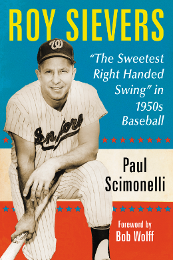The Nationals and their fans bid a reluctant farewell to Seattle after the team pounded a Mariners staff with the lowest ERA in baseball for ten home runs over three days in pitcher-friendly Safeco Field.
Manager Matt Williams told reporters before the series that it was not necessarily a measuring stick for a team that has struggled against top competition. Even so, it was a huge confidence builder for the Nats, who can now head into the stretch run feeling that they are currently capable of winning anywhere against anyone.
The offensive display at spacious Safeco was a flourish to wrap up the interleague portion of the schedule at 10-10, with a 5-5 mark on the road. Think that’s not much of accomplishment? It’s actually a testament to the team’s resilience when faced with one of the saddest legacies of the Bud Selig era: an unbalanced interleague slate without a standardized set of rules.
Baseball’s schedule makers did the Nats no favors this year when they set three West Coast road trips, two that opened with visits to strong-armed American League teams. Having to change time zones and rules on the fly against top teams is a difficult task. And thanks to the divisional scheduling formula and made-up “rivalries,” Washington’s interleague schedule was stacked with postseason contenders while the other NL division leaders and NL East teams had it easier.
Yes, the Nats took care of business against the weaker Astros and Rangers, going 6-1. But in addition to the road games against the Athletics (78-58) and Mariners (73-62), they played at home against the Angels (83-53) and had a home-and-home series with the Orioles (78-56), all four of whom could make the postseason. They were the only team to run that gauntlet, going 4-9. The bullpen took four of those losses, including two one-run games and another in extra innings.
No one else in the NL East played Baltimore, and the Marlins, who own the NL’s best interleague record at 13-7, instead swept the losing Tampa Bay Rays. The cross-town Angels were the toughest AL team to face the Dodgers (11-9 interleague), whose schedule included the middling Twins, White Sox and Indians. The Brewers (also 11-9) had their toughest interleague games at home against Baltimore and saw the Red Sox, Rays and Blue Jays, along with their “rivals” in Minnesota.
The Nats also were hampered by the disparity in the two leagues’ rules. Generally, they already have their best hitters in the lineup and can’t magically pull a .256/.338/.428 hitter (the average for all AL designated hitters last season) off their bench when they visit an AL team. Guys like Nate McLouth (.173/.280/.237), Zach Walters (.202/.269/.462) and most recently Nate Schierholtz (.188/.236/.302) have been plugged into the lineup while stronger hitters have filled the DH spot. That’s not a whole lot better than the collective pitchers’ line of .114/.148/.139.
Still, the Nats played .500 ball in AL parks and won at least one game everywhere they went except Oakland, where they played without three injured starters and a rare blown save cost them one game.
The argument over which league is superior and which rules are better can wait for another time. What’s clear is that the Nationals held their own against arguably the toughest interleague schedule in the majors. They proved last weekend that they can pummel baseball’s best pitchers in a park where their hitters face physical and tactical disadvantages. They’re now ready to get back to good old NL baseball, knowing they they’re capable of winning, no matter who or where they play.






